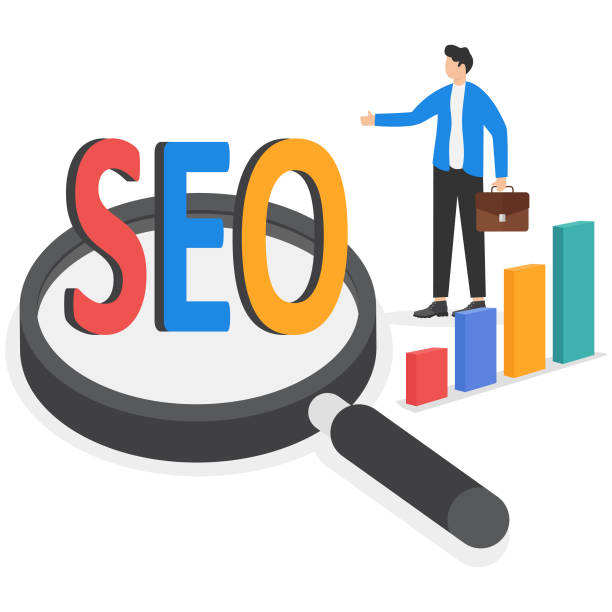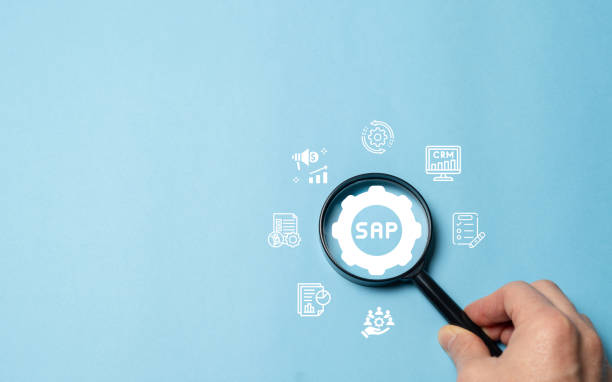What is Internal SEO and Why is it Important?

Internal SEO, or On-Page SEO, refers to the set of actions you take within your website to improve your site’s ranking in Google search results and other search engines.
These actions include optimizing content, site structure, HTML tags, and other factors related to the site.
The importance of #internal_seo is that search engines, by examining these factors, understand the content of your site and display it to relevant users.
In other words, internal SEO helps search engines understand what your site is about and what value it has for users.
Internal SEO is one of the main pillars of site SEO, and along with external SEO and technical SEO, it helps to improve the site’s ranking in search results.
By performing internal SEO correctly and in principle, you can increase your site’s organic traffic, attract more visitors, and ultimately achieve your business goals.
Internal SEO focuses on optimizing different parts of the site for search engines.
Is your online store ready to attract the maximum number of customers and increase sales? Rasaweb transforms your online business with modern and efficient online store designs.
✅ Increased speed and improved SEO
✅ Excellent user experience on mobile and desktop⚡ Get a free online store design consultation from Rasaweb!
Keyword Research, the Foundation of Internal SEO

Keyword research is one of the most important steps in internal SEO.
Before anything else, you need to know what words users use to find your products or services.
Using keyword research tools like Ahrefs, Ubersuggest, or Keywordtool.io, you can find keywords related to your business.
These tools provide you with information such as search volume, competition level, and related keywords.
After finding the appropriate keywords, you should use them in your site’s content.
Keep in mind that using too many keywords (Keyword Stuffing) can have a negative impact on your site’s ranking.
It is best to use keywords naturally and in the right place.
Long-Tail Keywords can also be a good option for attracting traffic, as they usually have less competition and target users who are looking for something specific.
Choosing the right keywords is the first step for SEO and helps you optimize your content for search engines.
Optimizing the Page Title (Title Tag) and Meta Description

The Title Tag and Meta Description are two important elements in internal SEO that are displayed in search results.
The title tag is the title that appears at the top of the browser and in search results.
The meta description is a short description that appears below the title tag in search results.
These two elements should be attractive, relevant, and include the main keywords.
The title tag should be a maximum of 60 characters and the meta description a maximum of 160 characters.
A good title tag can encourage users to click on your link, and a suitable meta description can provide users with more information about the page content.
For example, if your page is about “SEO Training,” the title tag could be “SEO Training in Simple Language | Comprehensive Guide 2024” and the meta description could be “In this article, you will learn the basics of SEO and learn how to optimize your site for search engines.”
| Element | Description | Best Practice |
|---|---|---|
| Title Tag | Page title in search results and at the top of the browser | Maximum 60 characters, includes the main keyword, attractive and relevant |
| Meta Description | Short description below the page title in search results | Maximum 160 characters, includes the keyword, attractive and describes the content |
Content Optimization for Internal SEO

Content is king! You must have heard this sentence.
High-quality and relevant content is one of the most important factors in internal SEO.
Your content should be useful and engaging for users and answer their questions.
Also, it should include the main keywords, but you should not use them too much.
Your content must be original and avoid copying other people’s content, as Google penalizes duplicate content.
To optimize content, you can use headings and subheadings (H1 to H6) to organize your content and help search engines understand the structure of your content.
You can also use images, videos, and other multimedia elements to make your content more attractive.
Internal SEO has a direct relationship with producing high-quality content.
Do you have an online store, but your sales are not as expected? Rasaweb solves your problem forever with professional online store designs!
✅ Significantly increase conversion rates and sales
✅ Unparalleled user experience for your customers
⚡ Click to get a free consultation with Rasaweb!
Image Optimization for Internal SEO

Images play an important role in the attractiveness and better understanding of content, but if they are not properly optimized, they can reduce the site’s loading speed and have a negative impact on SEO.
To optimize images, you need to reduce their size without reducing their quality.
You can use online tools like TinyPNG or ImageOptim to reduce image sizes.
You should also use the Alt tag to describe images.
The Alt tag helps search engines understand what the image is about and display it in search results.
The Alt tag should be short, relevant, and include keywords.
For example, if you have an image of a flower vase, the Alt tag could be “Red Rose Flower Vase.”
Image file names should also be relevant and include keywords.
Internal SEO helps improve site speed by optimizing images.
Proper URL Structure and Its Impact on Internal SEO

Proper URL structure plays an important role in internal SEO.
The URL should be short, readable, and include keywords.
Avoid using special characters and long numbers in your URL.
The URL should indicate the content of the page and help users and search engines understand what the page is about.
For example, if your page is about “SEO Training,” the URL could be `example.com/amoozesh-seo`.
It is recommended to use a hyphen (-) instead of an underscore (_) in the URL.
Also, it is better for URLs to be hierarchical and reflect your site structure.
For example, if your page is part of the “Training” category, the URL could be `example.com/amoozesh/amoozesh-seo`.
Internal SEO helps search engines better understand the site with a proper URL structure.
The Importance of Internal Linking in Internal SEO

Internal linking means creating links between different pages of your site.
Internal linking helps search engines understand the structure of your site and find related pages.
It also helps users easily navigate your site and find the information they need.
Internal linking should be done naturally and relevantly.
Avoid linking to unrelated pages.
The Anchor Text should also be relevant and descriptive of the content of the destination page.
For example, if you are linking from the “SEO Training” page to the “Keyword Research” page, the link text could be “Keyword Research.”
Internal linking is one of the most important factors in internal SEO and can help improve your site’s ranking in search results.
Internal SEO increases the credibility of site pages through internal linking.
| Advantage | Description |
|---|---|
| Improve Site Ranking | Internal linking helps search engines understand the site structure. |
| Improve User Experience | Internal linking helps users easily navigate the site. |
| Increase Page Credibility | Internal linking increases the credibility of related pages. |
Optimizing Site Speed and Its Impact on Internal SEO

Site speed is one of the important factors in internal SEO and user experience.
Users expect sites to load quickly, and if a site takes too long to load, users will leave it.
Google also values site speed, and sites with high loading speeds get a better ranking in search results.
To optimize site speed, you can use tools like Google PageSpeed Insights.
These tools help you identify your site’s speed issues and provide solutions to fix them.
Some of the site speed optimization solutions include reducing image sizes, using a Content Delivery Network (CDN), enabling Gzip compression, and optimizing code.
Internal SEO improves user experience by optimizing site speed.
Are you disappointed with the low conversion rate of your online store?
Rasaweb is your definitive solution with professional online store design!
✅ Increase your sales and income
✅ Unparalleled user experience for your customers
⚡ Get a free consultation now!
Site Responsiveness and Its Importance in Internal SEO

Site responsiveness means that the site is compatible with different devices such as mobile, tablet, and desktop.
Today, most users access the Internet through mobile phones, and Google gives more points to sites that are responsive.
If your site is not responsive, mobile users will have a bad user experience, and the chance of leaving your site will increase.
To make sure your site is responsive, you can use Google’s Mobile-Friendly Test tool.
This tool shows you how your site is displayed on mobile and what problems it has.
To make the site responsive, you can use responsive web design or use a responsive template.
Internal SEO increases site traffic by making the site responsive.
Checking and Fixing Internal SEO Errors
![]()
Checking and fixing internal SEO errors is one of the important steps in internal SEO.
Internal SEO errors can negatively affect your site’s ranking in search results.
Some common internal SEO errors include broken links, content-free pages, duplicate pages, and 404 errors.
To check for internal SEO errors, you can use tools like Screaming Frog SEO Spider or Ahrefs Site Audit.
These tools help you identify your site’s errors and provide solutions to fix them.
Fixing internal SEO errors can help improve your site’s ranking in search results.
Internal SEO requires continuous error checking and fixing.
By performing internal SEO and optimizing the site, the site’s ranking can be improved.
Frequently Asked Questions
| Question | Answer |
|---|---|
| What is a Meta Title and why is it important in Internal SEO? | The meta title is the most important element of internal SEO, which is displayed at the top of the browser tab and search results. This title helps search engines and users understand the main topic of the page and should include the main keyword. |
| What role does the Meta Description play in Internal SEO? | The meta description is a short summary of the page content that is displayed below the title in search results. Although it does not directly affect ranking, its attractiveness can increase the click-through rate (CTR). |
| How should keywords be used in the page content? | Keywords should be used naturally and relevantly in strategic locations such as the title, headings, first paragraph, and body of the text. Avoid excessive keyword stuffing. |
| What is the importance of high-quality and comprehensive content in Internal SEO? | High-quality, unique, informative, and comprehensive content that meets the user’s needs is of great importance. Search engines give higher rankings to content that creates real value. |
| What is the use of Heading Tags (H1-H6) in the Internal SEO structure? | Heading tags (H1, H2, H3, etc.) are used to structure content and specify the importance of different sections. H1 is the main title of the page, and each page should have only one H1. Other tags are used for subtitles. |
| How can we optimize images to improve Internal SEO? | To optimize images, use descriptive Alt Text that includes relevant keywords, reduce the image file size without losing quality, and use meaningful and relevant file names. |
| What are the characteristics of a friendly URL for Internal SEO? | A friendly URL should be short, readable, descriptive, include the main keywords, and be free of extra characters. The URL structure should be hierarchical and logical so that it is understandable for both users and search engines. |
| How does Internal Linking help Internal SEO? | By connecting related pages to each other, internal linking helps users and search engine crawlers better understand the site structure, transfer page credibility, and increase the time a user spends on the site. |
| What is the impact of page load speed on Internal SEO? | High loading speed is critical for both user experience and SEO ranking. Slower pages may be ignored by search engines and lead to an increase in the bounce rate. |
| Why is Mobile-Friendliness so important in Internal SEO? | Given the increasing number of searches via mobile devices, having a responsive and mobile-friendly site is essential for user experience and ranking in search results (Google’s Mobile-First Indexing). |
And other services of Rasa Web advertising agency in the field of advertising
Smart Customer Journey Map: A fast and efficient solution for managing campaigns with a focus on dedicated programming.
Intelligent Link Building: A new service to increase campaign management through marketing automation.
Smart Customer Journey Map: Transform your website traffic by optimizing key pages.
Smart Digital Branding: A combination of creativity and technology to improve SEO ranking through attractive user interface design.
Smart Marketplace: A dedicated service to grow website traffic based on intelligent data analysis.
And more than hundreds of other services in the field of internet advertising, advertising consulting and organizational solutions
Internet Advertising | Advertising Strategy | Advertorial Report
Resources
What is internal SEO and why is it important?
,Internal SEO Training
,Internal SEO or on-page SEO Training
,What is Internal SEO? (on page seo) + Step-by-step training in 2024
? Are you ready to take your business to the top? Rasa Web Digital Marketing Agency, with expertise in SEO, content marketing, and multilingual website design, paves your path to digital success.
📍 Tehran, Mirdamad Street, next to the Central Bank, Southern Kazerun Alley, Ramin Alley No. 6



